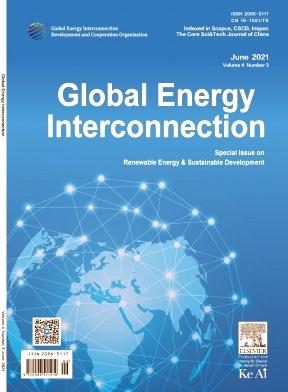考虑用户侧资源时空互补性的多智能体、多时间尺度需求响应聚合调控方法
IF 2.6
Q4 ENERGY & FUELS
引用次数: 0
摘要
大量可再生能源和可控资源的整合破坏了配电网的供需平衡。安全运行取决于用户侧资源在前一天和当天的需求响应中的参与。目前的研究通常忽略了这些时间尺度之间的时空变化和协调,导致了严重的日前优化误差、高日内成本和缓慢的收敛。为了应对这些挑战,我们开发了一种多智能体、多时间尺度的用户侧资源时空协调需求响应聚合调节方法。首先,考虑用户侧资源的时空协调特征,以最大限度地降低总调节成本和配电网损失加权总和为目标,建立了一个考虑用户侧资源时空协调特征的框架;然后,针对两个不同的时间尺度(日前和日内)解决了优化问题。对于日前时间尺度,我们开发了一种改进的粒子群优化(IPSO)算法,该算法基于当日结果动态调整粒子数量以优化调节策略。对于日内时间尺度,我们开发了一种改进的交替方向乘法器(IADMM)算法,该算法将任务分配到边缘分配站,通过使用历史日前数据动态调整惩罚因子来同步规则并提高精度。仿真结果表明,该方法能充分实现日、日内多时间尺度时空协同聚合调控,有效降低总调控成本和配电网损失,增强智能电网弹性。本文章由计算机程序翻译,如有差异,请以英文原文为准。
Multiagent, multitimescale aggregated regulation method for demand response considering spatial–temporal complementarity of user-side resources
The integration of substantial renewable energy and controllable resources disrupts the supply–demand balance in distribution grids. Secure operations are dependent on the participation of user-side resources in demand response at both the day-ahead and intraday levels. Current studies typically overlook the spatial–-temporal variations and coordination between these timescales, leading to significant day-ahead optimization errors, high intraday costs, and slow convergence. To address these challenges, we developed a multiagent, multitimescale aggregated regulation method for spatial–-temporal coordinated demand response of user-side resources. Firstly, we established a framework considering the spatial–-temporal coordinated characteristics of user-side resources with the objective to minimize the total regulation cost and weighted sum of distribution grid losses. The optimization problem was then solved for two different timescales: day-ahead and intraday. For the day-ahead timescale, we developed an improved particle swarm optimization (IPSO) algorithm that dynamically adjusts the number of particles based on intraday outcomes to optimize the regulation strategies. For the intraday timescale, we developed an improved alternating direction method of multipliers (IADMM) algorithm that distributes tasks across edge distribution stations, dynamically adjusting penalty factors by using historical day-ahead data to synchronize the regulations and enhance precision. The simulation results indicate that this method can fully achieve multitimescale spatial–-temporal coordinated aggregated regulation between day-ahead and intraday, effectively reduce the total regulation cost and distribution grid losses, and enhance smart grid resilience.
求助全文
通过发布文献求助,成功后即可免费获取论文全文。
去求助
来源期刊

Global Energy Interconnection
Engineering-Automotive Engineering
CiteScore
5.70
自引率
0.00%
发文量
985
审稿时长
15 weeks
 求助内容:
求助内容: 应助结果提醒方式:
应助结果提醒方式:


